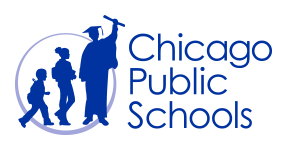
These past 10 days concerning education in Austin have centered on misleading statements.
I’m not sure if it’s ineptness or intentional misinterpretation of facts in an effort of organize around the construction of a new high school for Austin while entertaining the conversation (without principals and LSC members) about closing four elementary schools.
Let me start with the Chicago Public Schools (CPS) 2017 capital budget.
Fact: CPS 2017 proposed capital budget is $938 million.
Fiction: the State of Illinois did not allocate $938 million of capital dollars to CPS. Per DNAInfo.com, the new school funding formula provided CPS with a net additional $450 million.
The breakdown is:
- $221 million for employee pension
- $76 million in additional funding for CPS because of the large percentage of low-income students
- $18.5 million for early childhood education
- $13 million for bilingual education, and
- allowing the Chicago Board of Education to increase property taxes by $125 million (can be used for operating expenses or to finance a bond issue for capital improvements).
The capital budget is primarily financed by CPS and – drum roll, please – the Chicago City Council. The City Council voted in 2015 to approve a property tax increase for CPS capital needs to a tune of $475 million. This has nothing to do with any state funds.
I call this particular tax the income segregation tax.
Please read my AustinTalks.org op-ed concerning the optics as to how CPS is re-segregating schools by class, wealth and race being an “unintentional intentional” consequence.
Those who claimed to have reviewed the 2017 capital budget should have also documented further evidence of CPS accelerated path to re-segregating our schools.
CPS is building a $20 million annex to Skinner School to accommodate those families refusing to enroll their children in Brown School. Brown is less than three blocks from Skinner and is the neighborhood school.
Brown is a school that is less than 50 percent utilized, yet CPS will spend $4.4 million to establish a STEM program there to establish a “separate but equal policy” between the two schools.
You can only ascertain why CPS closed four Austin schools in 2013 because of under-utilization, but is willing to spend $24 million to promote a modern version of “separate but equal” rather than enforce the established boundaries and redirect the $24 million into all our schools.
If CPS can allocate money to two schools in the above scenario, why even bother having conversations about closing elementary schools.
The effort to reignite the construction of a new high school in Austin is perplexing.
A new high school will definitely make construction companies like Walsh, Paschen, and Sollitt happy, but Austin does not have the high school student population to justify new construction.
Currently, there are approximately 860 students enrolled in Austin College & Career Academy, Michele Clark Academic Prep Magnet High School and Frederick Academy Douglass High School.
We should be focused on collaborating with educators, parents, and stakeholders in making smart investments in our existing high schools to demonstrate to Austin families that their children can receive an equitable and well-resourced education at our existing high schools.
Another fact is that some (not all) of our local elected officials can’t have it both ways in supporting the expansion of charter schools in Austin and still claim they’re strong proponents of neighborhood schools. They passively sat idle while a high-performing school like Emmet was closed, yet actively supported the opening of Moving Everest Charter School by an inexperienced operator who is not indigenous to Austin.
We also have to examine why Hispanic families living in Austin are able to send their children to neighborhood schools in Belmont-Cragin and not Austin.
Austin is at a crossroad concerning the sustainability and future of our neighborhood. Austin has loss population due to crime, lack of affordable housing, economic opportunities and ongoing CPS mismanagement.
Austin Coming Together has developed the open space for us to organically organize within and develop a comprehensive quality of life plan. I believe it’s a timely opportunity to craft the plan and hold all of us accountable for the execution of the plan.
When completed, I believe that the plan can speak for us all and not certain elected officials and organizations popping up and claiming to speak for all of Austin.
Dwayne Truss is a longtime Austin resident. AustinTalks encourages other West Siders to share their opinions on whatever issues are of concern to you.